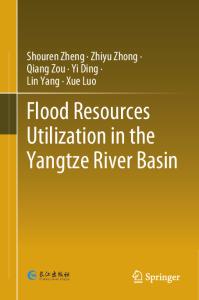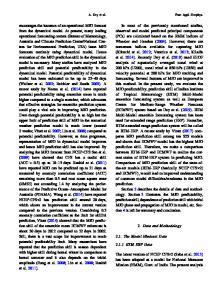Sources of Subseasonal Prediction Skill for Heatwaves over the Yangtze River Basin Revealed from Three S2S Models
- PDF / 4,821,838 Bytes
- 16 Pages / 595.3 x 841.9 pts (A4) Page_size
- 22 Downloads / 307 Views
• Original Paper •
Sources of Subseasonal Prediction Skill for Heatwaves over the Yangtze River Basin Revealed from Three S2S Models Jiehong XIE, Jinhua YU, Haishan CHEN, and Pang-Chi HSU* Key Laboratory of Meteorological Disaster of Ministry of Education/Joint International Research Laboratory of Climate and Environment Change/Collaborative Innovation Center on Forecast and Evaluation of Meteorological Disasters, Nanjing University of Information Science & Technology, Nanjing 210044, China (Received 14 May 2020; revised 16 July 2020; accepted 12 August 2020) ABSTRACT Based on the reforecast data (1999–2010) of three operational models [the China Meteorological Administration (CMA), the National Centers for Environmental Prediction of the U.S. (NCEP) and the European Centre for MediumRange Weather Forecasts (ECMWF)] that participated in the Subseasonal to Seasonal Prediction (S2S) project, we identified the major sources of subseasonal prediction skill for heatwaves over the Yangtze River basin (YRB). The three models show limited prediction skills in terms of the fraction of correct predictions for heatwave days in summer; the Heidke Skill Score drops quickly after a 5-day forecast lead and falls down close to zero beyond the lead time of 15 days. The superior skill of the ECMWF model in predicting the intensity and duration of the YRB heatwave is attributable to its fidelity in capturing the phase evolution and amplitude of high-pressure anomalies associated with the intraseasonal oscillation and the dryness of soil moisture induced by less precipitation via the land–atmosphere coupling. The effects of 10–30-day and 30–90-day circulation prediction skills on heatwave predictions are comparable at shorter forecast leads (10 days), while the biases in 30–90-day circulation amplitude prediction show close connection with the degradation of heatwave prediction skill at longer forecast leads (> 15–20 days). The biases of intraseasonal circulation anomalies further affect precipitation anomalies and thus land conditions, causing difficulty in capturing extremely hot days and their persistence in the S2S models. Key words: subseasonal prediction, heatwave, Yangtze River Basin, subseasonal-to-seasonal models Citation: Xie, J. H., J. H. Yu, H. S. Chen, and P.-C. Hsu, 2020: Sources of subseasonal prediction skill for heatwaves over the Yangtze River basin revealed from three S2S models. Adv. Atmos. Sci., https://doi.org/10.1007/s00376-020-0144-1. (in press) Article Highlights:
• The major sources of subseasonal prediction skill for heatwaves over the Yangtze River Basin were identified based on S2S model data.
• Models with superior skill for heatwave prediction show higher fidelity in predicting both the 10–30-day and 30–90-day circulation anomalies.
• The land conditions modulated by circulation anomalies also contribute to the prediction skill for heatwave duration and
intensity.
1. Introduction Heatwaves, prolonged extremely high-temperature days, exert considerable impacts on not only human heal
Data Loading...











